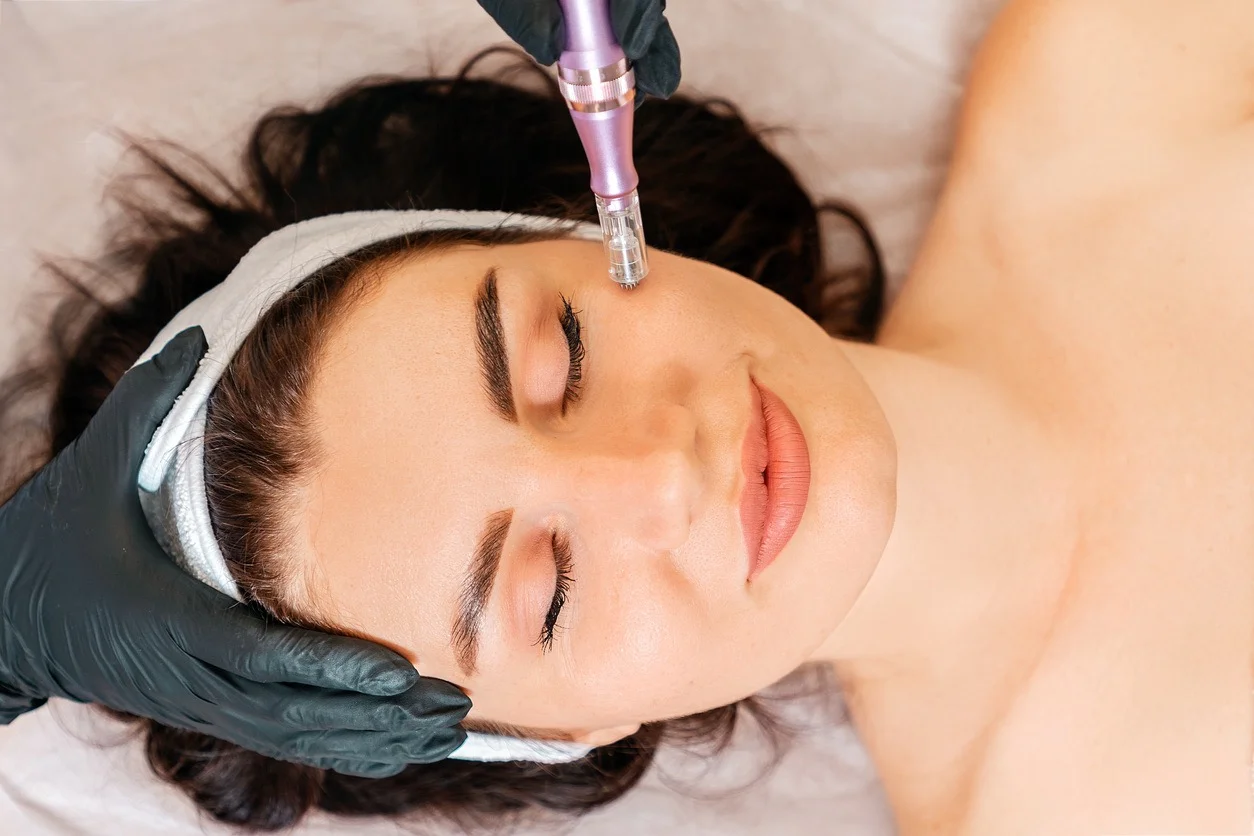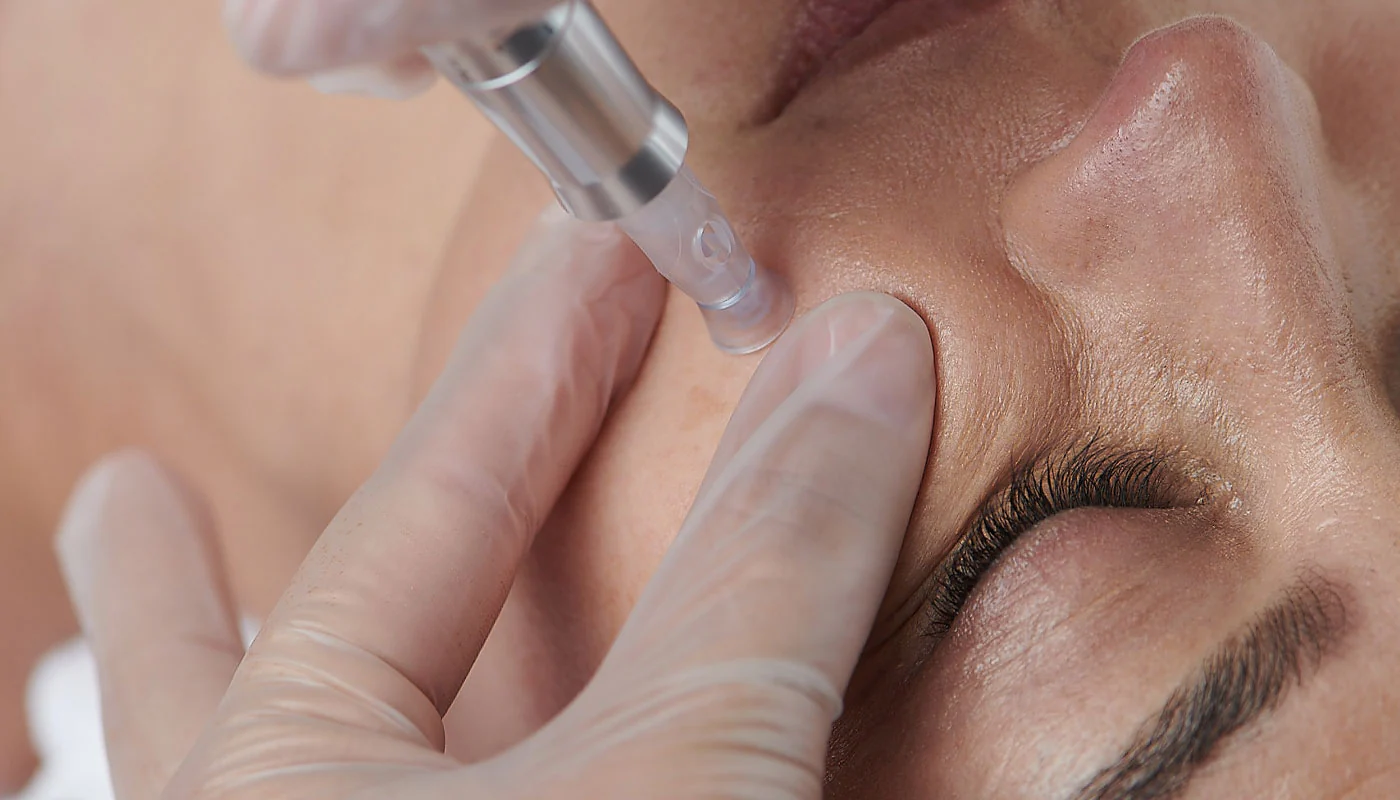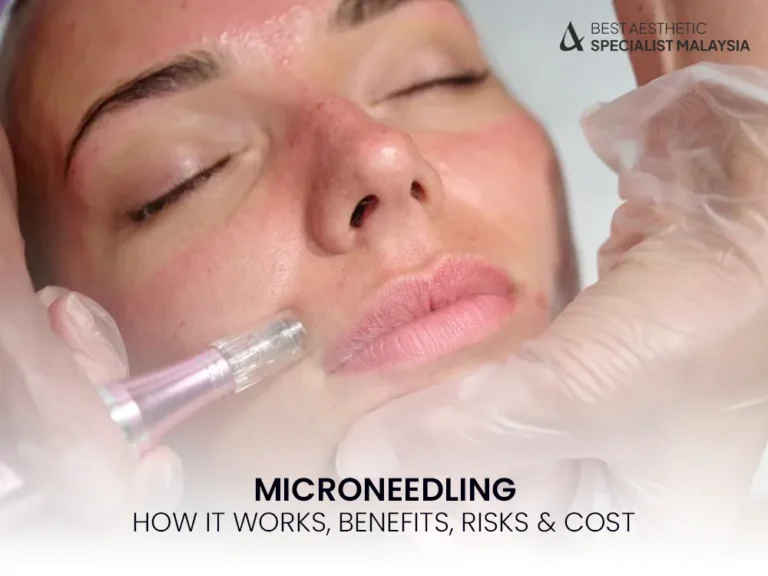Microneedling is a minimally invasive cosmetic procedure that uses fine needles to create controlled micro-injuries in the skin, stimulating collagen production. It improves skin texture, reduces scars, fine lines, and hyperpigmentation. Safe when performed by trained professionals, microneedling treatment requires proper aftercare to minimize side effects and maximize long-term results.
At Best Aesthetic Specialist Malaysia, our microneedling treatment harnesses advanced techniques to stimulate collagen and elastin production, enhancing skin texture, tone, and elasticity. With expert dermatologists and state-of-the-art technology, we offer safe, effective solutions tailored to rejuvenate your skin and restore a youthful glow.
What is Microneedling?

Microneedling, also known as collagen induction therapy, is a dermatologic procedure designed to rejuvenate the skin. Tiny, sterile needles create microchannels in the skin, triggering the body’s natural healing response. This process promotes collagen and elastin production, improving skin firmness, texture, and overall appearance.
Key Points:
Minimally invasive, non-surgical
Stimulates natural collagen remodeling
Can be combined with topical serums for enhanced absorption
A systematic review of 21 studies (723 patients) for facial skin aging reported that ~83 % of patients were satisfied with microneedling results (95% CI: 0.76–0.88).
Symptoms / Indications
Microneedling is indicated for patients with:
Fine lines and wrinkles
Acne scars or surgical scars
Hyperpigmentation or melasma
Enlarged pores and uneven skin texture
Stretch marks (striae)
It is generally suitable for all skin types, including darker skin tones, with careful technique to reduce hyperpigmentation risk.
Causes / Mechanism of Action
Microneedling works by controlled skin injury:
Fine needles penetrate the epidermis and dermis.
Micro-injuries trigger wound healing cascades, increasing collagen and elastin synthesis.
Enhanced blood flow and nutrient delivery improve skin tone and texture.
Unlike lasers, microneedling preserves the epidermis, reducing downtime and minimizing the risk of pigmentation changes.
Diagnosis / Candidate Assessment
Before microneedling, a clinician evaluates:
Skin type and tone
Presence of active acne or skin infections
History of keloids or poor wound healing
Medications affecting healing (e.g., anticoagulants, retinoids)
A personalized plan is created, determining needle depth, treatment frequency, and adjunctive therapies.
Treatment Options

Microneedling can be performed using:
Manual dermarollers – handheld devices with fine needles
Motorized pens – allow adjustable depth and precision
Combination therapy – microneedling with PRP (platelet-rich plasma), growth factors, or topical serums
Procedure Overview:
Cleanse and disinfect skin
Apply topical numbing agent
Roll or stamp microneedling device across target area
Apply post-treatment serum or moisturizer
Typical Regimen:
Sessions every 4–6 weeks
3–6 sessions recommended for optimal results
Maintenance every 3–6 months
Risks and Side Effects
Microneedling is generally safe but may cause:
Temporary redness, swelling, or pinpoint bleeding
Mild bruising or tenderness
Infection if sterile technique is not followed
Rare: scarring or hyperpigmentation
Risk Mitigation:
Only undergo treatment with licensed clinicians
Avoid sun exposure immediately after
Follow post-procedure care instructions
Prevention / Care Recommendations
While microneedling cannot prevent all skin aging, following steps improve outcomes and safety:
Pre-treat acne or skin infections before procedure
Avoid retinoids or exfoliating acids 2–3 days prior
Use broad-spectrum sunscreen daily
Maintain skin hydration and gentle skincare post-treatment
Avoid makeup for 24 hours after treatment
When to See a Doctor
Seek professional advice if you experience:
Severe redness, swelling, or persistent pain beyond a few days
Signs of infection: pus, fever, spreading redness
Unusual scarring or pigmentation changes
Pre-existing conditions such as active eczema, psoriasis flare-ups, or keloid history
Conclusion
Skin needling is a safe, evidence-based procedure offered at certified aesthetic clinics across Malaysia. It effectively improves skin texture, reduces scars, fine lines, and pigmentation by stimulating natural collagen and elastin production. Performed by qualified clinicians, skin needling ensures precise, personalized, and lasting results for patients seeking advanced skin rejuvenation.
How to Find the Right Microneedling Clinic In Malaysia
Choose a licensed dermatologist or certified aesthetic provider with proven microneedling experience. Check before-and-after results, verified reviews, and device quality (e.g., KKM-certified or FDA-cleared pens). Ensure they follow strict hygiene, customize needle depth, and explain risks. Schedule a consultation to assess expertise, clarity, and safety standards.
Frequently Asked Questions (FAQ)
Q1: Is microneedling painful?
A: Most patients experience mild discomfort, often described as slight pinching. Topical numbing creams significantly reduce pain, making the procedure tolerable for most individuals.
Q2: How long is recovery?
A: Redness usually resolves within 24–48 hours. Minor swelling, pinpoint bleeding, or bruising may persist up to 5 days, depending on needle depth and skin sensitivity.
Q3: Can skin needling treat acne scars?
A: Yes, it is highly effective for atrophic acne scars, stimulating collagen production and remodeling skin, gradually smoothing texture and improving appearance over multiple sessions.
Q4: How soon will I see results?
A: Some improvement can be seen after 1–2 sessions, but significant results typically appear after 3–6 treatments over several months, depending on scar severity and skin type.
Q5: Is microneedling safe for dark skin?
A: Yes, when performed correctly, microneedling has minimal risk of hyperpigmentation, making it a safer alternative to certain laser treatments for darker skin tones.
Q6: Can I combine skin needling with other treatments?
A: Yes, combining skin needling with PRP, hyaluronic acid, vitamin C, or growth-factor serums enhances collagen stimulation and improves overall skin rejuvenation results.
Q7: How often should skin needling be done?
A: Treatments are usually spaced every 4–6 weeks. Maintenance sessions every 3–6 months help sustain results, tailored to individual skin goals and healing response.

